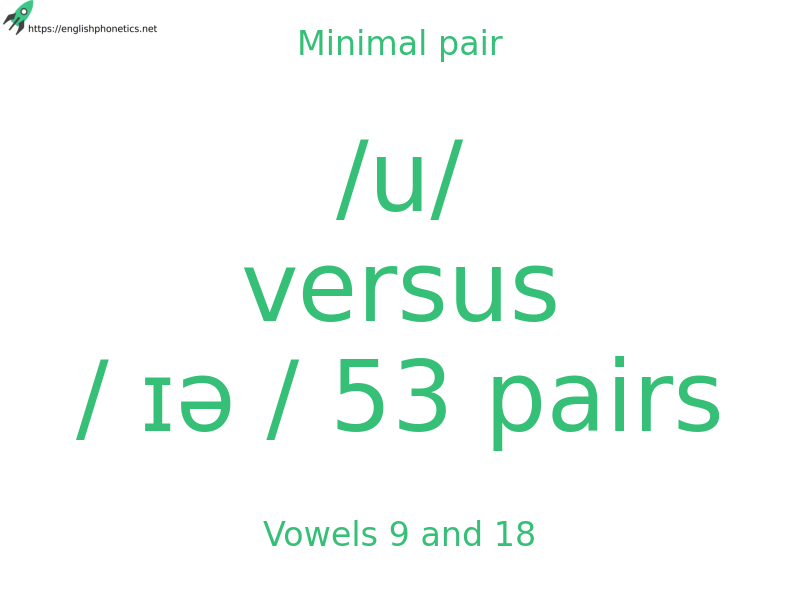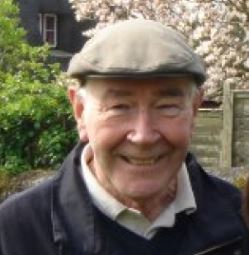Minimal Pair List Vowels 9 and 18, /u/ versus / ɪə / 53 pairs

The /u/ vowel is spelled <oo>, <ew>, <u> and <o> in
who
. The /
ɪə
/ diphthong is spelled <eerCe> or <ear> and <eir> in
weird
.
This is a contrast between a long vowel and a diphthong, widely separated in starting position and distinguished by lip-rounding. It is not a problem for any learners.
The density figure is 1.31%. The set makes 32 semantic contrasts giving a loading of 60.4%.
boo beer
boos beers
boo bier
boos biers
booze beers
booze biers
booed beard
chew cheer
chews cheers
chewed cheered
clew clear
clewed cleared
clews clears
clue clear
clues clears
clued cleared
do dear
do's dears
do deer
do's deers
food feared
gnu near
gnus nears
Jew jeer
Jews jeers
loon lien
loons liens
lieu leer
loo leer
loos leers
moo mere
moos meres
ooze ears
rood reared
rue rhea
rues rheas
ruse rheas
rule real
shoe shear
shoes shears
shoe sheer
shoo shear
shoos shears
shooed sheared
snood sneered
snooze sneers
too tear
two tear
twos tears
who's hears
woo weir
woos weirs
wooed weird
Ready to improve your english accent?
Get a FREE, actionable assessment of your english accent. Start improving your clarity when speaking

John Higgins
John Higgins retired in 2000, having spent the bulk of his career as a British Council English Language Officer working in Thailand, Turkey, Egypt and Yugoslavia and the last fifteen years in lectureships at Bristol University and then running an M.Sc. programme at Stirling University. His main field was EFL, with a special interest in CALL (computer-assisted language learning) in which, together with Tim Johns of Birmingham, he was responsible for important developments in methods and materials.
His publications include A Guide to Language Laboratory Material Writing, Universitetesforlaget, 1969, Computers and Language Learning, Collins, 1984, Language Learners and Computers, Longman, 1988, and Computers in English Language Learning, Intellect Press, 1992, together with numerous papers, reviews and pieces of software. He maintains a web page on minimal pairs and homographs for teachers of English pronunciation skills.


